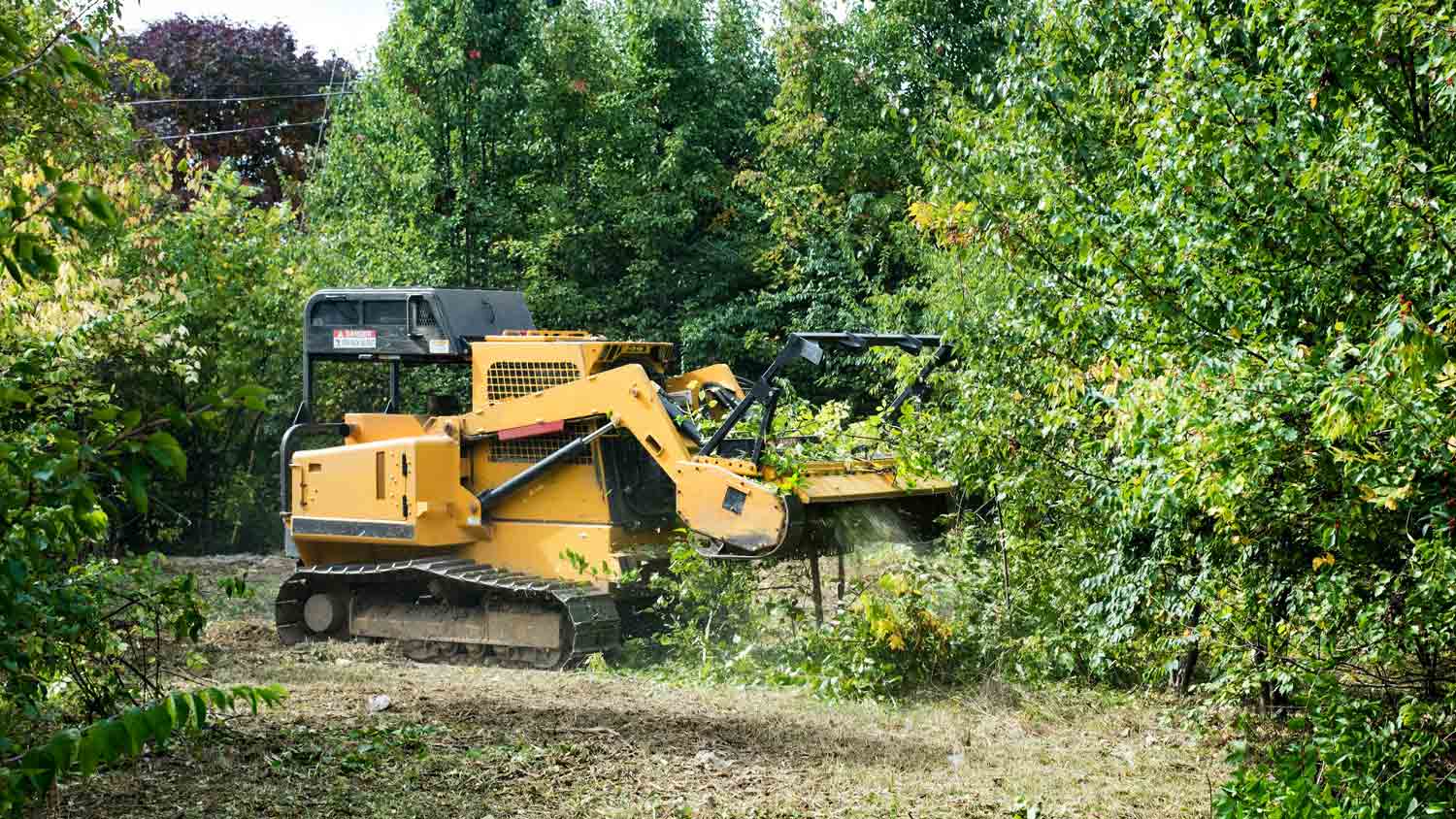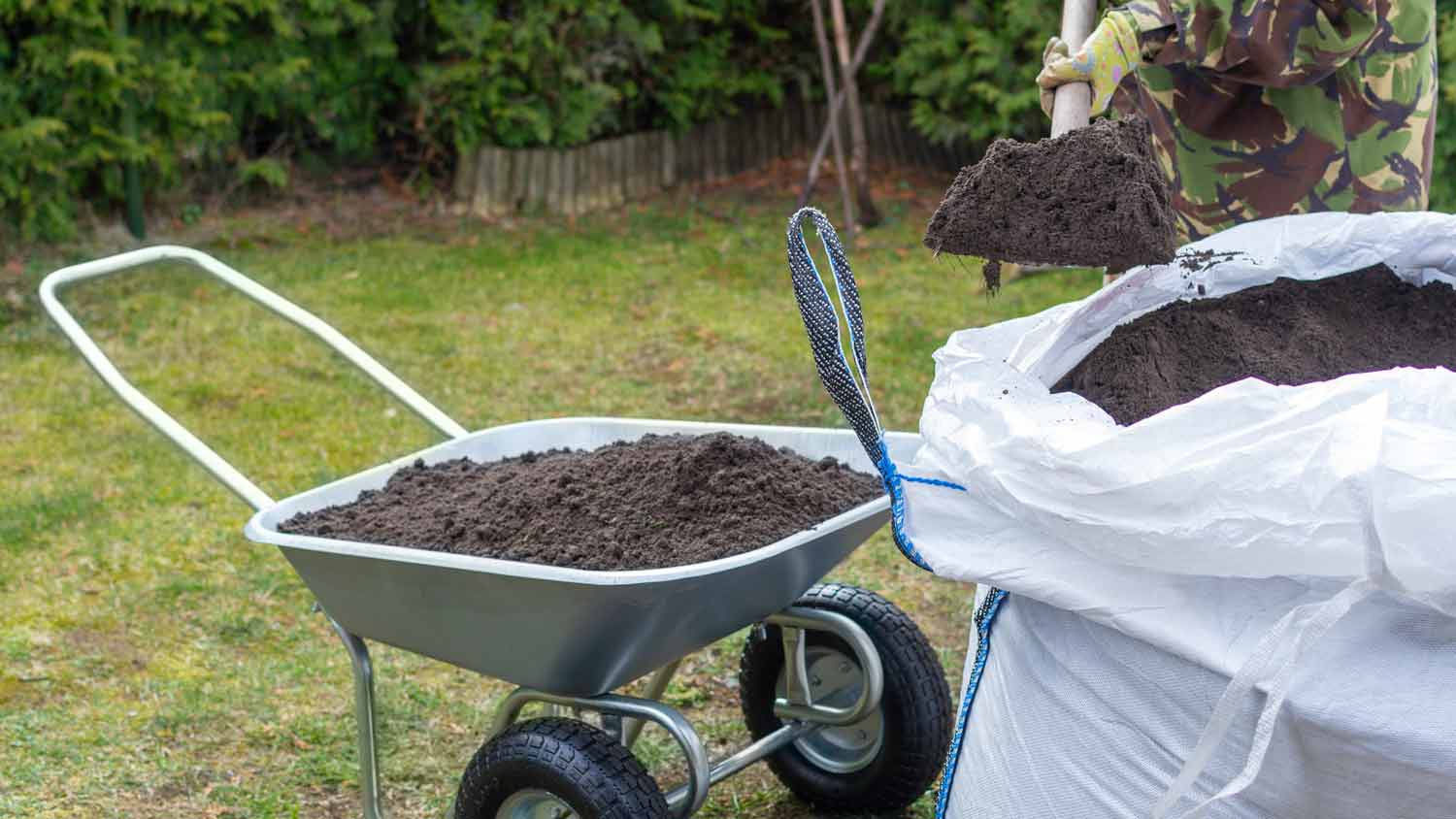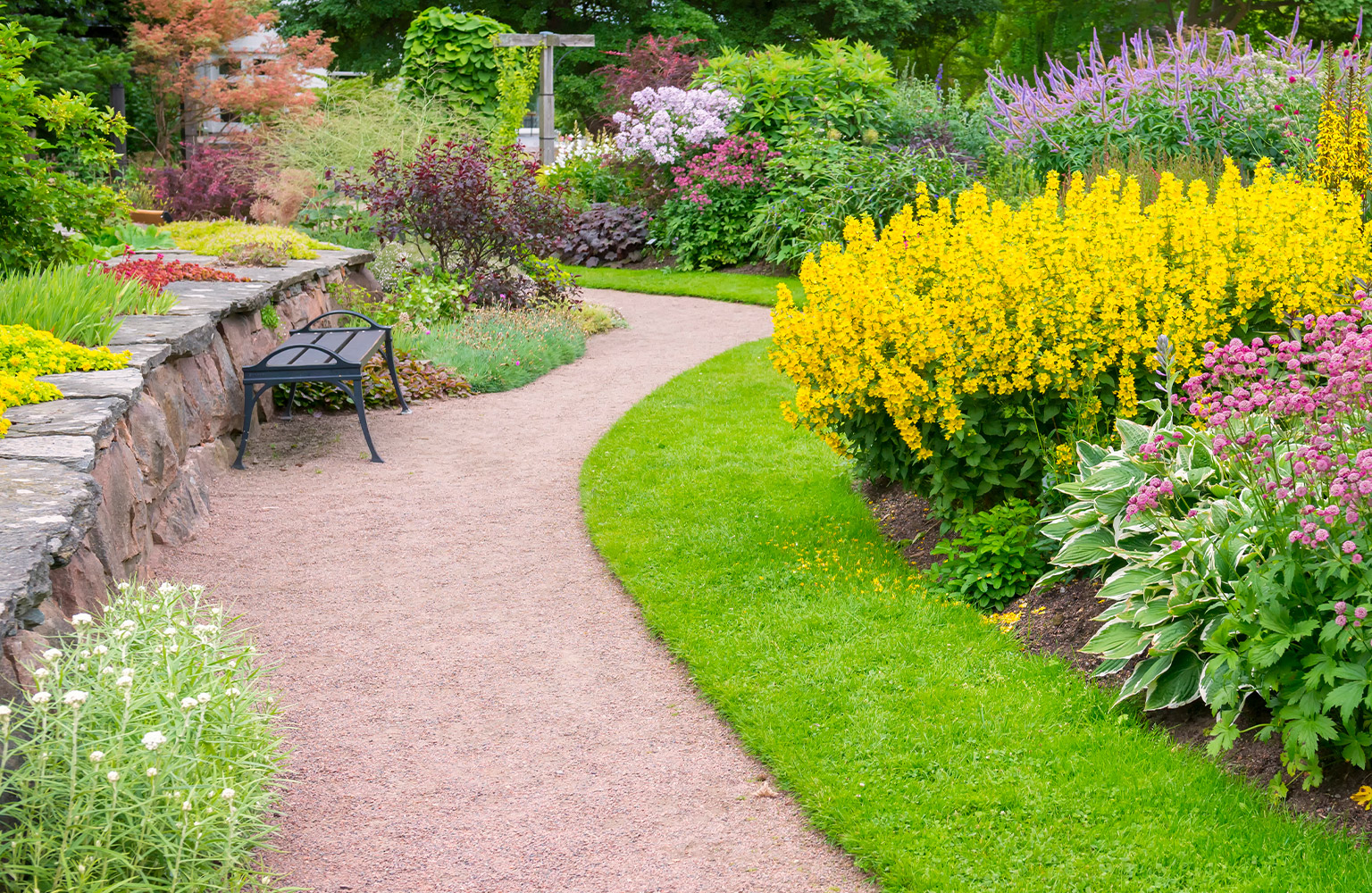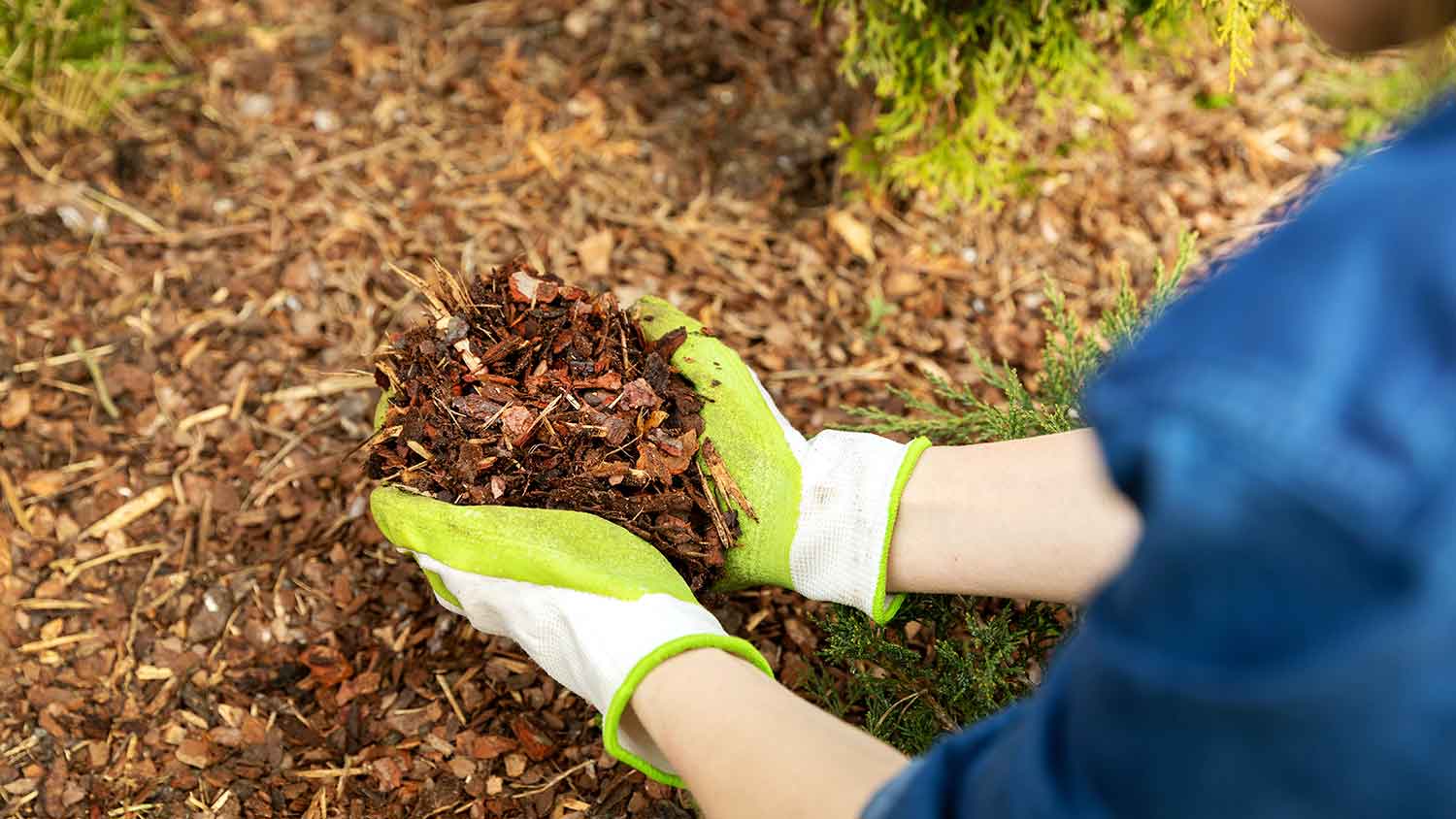
Discover the average forestry mulching cost, including per-acre and hourly rates, plus key factors that impact your total price. Get expert tips to save on your project.
Mulch and topsoil service costs depend on your project and location. Check with a local pro for your specific job.
Professional mulch delivery and installation costs vary based on the landscaping size, materials, desired customization, and labor rates.
Professional landscapers cost between$35 and $65 per hour and ensure optimal placement and efficiency.
Mulch should be replenished when it appears thin, faded, or when weeds start poking through.
Mulch delivery costs are dependent on the project size and amount of mulch needed, ranging between $90 and $2,200.
This article was created using automation technology and thoroughly fact-checked and edited by an Angi Editor in accordance with our AI policy.
Mulch is placed on top of existing soil in your gardens to both prevent weeds and support landscaping and add appeal. Mulch delivery and installation cost an average of $120, with most homeowners spending between $75 to $325 for a standard yard. Prices vary based on the amount of mulch needed, the type of mulch selected, and local labor rates. Smaller projects can cost as little as $50, while larger projects can exceed $800.
This guide explains what impacts your mulch delivery and installation cost, how to estimate your project, and what to expect whether you hire a pro or try it yourself. Let’s explore your options and make sure your landscaping investment pays off.
Understanding what drives mulch delivery and installation costs can help you budget wisely and choose the right solution for your yard. Let’s break down the main factors that impact pricing.
The size of your project is the single biggest factor in determining mulch delivery and installation cost. The total area you want to cover, measured in square feet, and the recommended mulch depth (usually two to three inches) will decide how much mulch you need. A small front bed requires less mulch and labor than an entire property, so your price will reflect that difference.
Bulk discounts are often available for larger orders, which can lower your cost per cubic yard. Conversely, very small projects may incur minimum service fees. Here’s how mulch delivery and installation cost changes based on project size:
| Project Size (Sq.Ft.) | Quantity (Cu. Yd.) | Cost Range |
|---|---|---|
| 100 | 1 | $90–$200 |
| 500 | 5 | $350–$700 |
| 1,000 | 10 | $700–$1,200 |
| 2,000 | 20 | $1,200–$2,200 |
Larger projects may qualify for reduced rates per yard, while smaller jobs are more likely to have delivery surcharges or minimum fees.
Most mulch installation projects are handled by landscapers, lawn care companies, or garden centers. Labor rates can be charged per hour (often $35 to $65), per cubic yard ($20 to $50), or as a flat fee for the entire job. Minimum service fees often apply to smaller projects.
Labor costs vary by region, with urban areas and high-cost-of-living regions tending to charge more. Labor typically includes spreading mulch, basic site preparation, edging, and weed barrier installation. If your yard has challenging access, steep slopes, or complex beds, you may see additional labor charges.
Some companies use mulch blowing equipment for large or commercial projects, which costs more than manual installation but speeds up the process for big jobs.
Most residential mulch installations do not require permits. However, if you are working in a protected area, close to wetlands, or on a large commercial project, permits might be needed. Permit fees, if applicable, could range from $25 to $100, but this is rare for typical homeowners.
Other elements that may affect your final price include:
Mulch Type: The type of mulch you choose can affect the overall price and appearance. Higher-end or custom mulch runs higher than standard versions.
Site complexity: Sloped yards, tight spaces, or beds with lots of obstacles increase labor time and cost.
Accessibility: If beds are far from the street, extra equipment or labor may be needed.
Site preparation: Clearing weeds, removing old mulch, or grading soil can add to your bill.
Post-installation cleanup: Removing packaging and sweeping walkways may incur a small charge.
Design or consultation: Custom landscaping plans or consultations can add $50 to $200.
Inspections: Rare, but some HOAs or municipalities require an inspection, adding to your cost.
Beyond the initial installation, there are several ongoing or one-time costs to keep in mind.
Warranties for mulch installation are rare, but some companies offer limited guarantees on installation quality or weed barrier performance. These warranties may add a small premium to your mulch delivery and installation cost, but they can provide peace of mind if you’re investing in a large project.
Mulch breaks down over time, so you’ll need to replenish it annually or every other year. The cost will depend on how much you need to top off—often one to two inches each season. Additional mulch for touch-ups or seasonal refreshes is a recurring expense.
Mulch conserves soil moisture, which can lower your water bills. You may also need to adjust your irrigation system to account for improved water retention.
Maintaining your mulch beds involves raking, fluffing, and replenishing mulch. Professional maintenance services can cost $100 to $300 per year, depending on the size of your beds and the type of mulch. DIY maintenance is less expensive but requires your time and effort. Some mulch types, like bark or wood chips, decompose faster and need more frequent upkeep.
Reputable contractors carry liability insurance for mulch installation. This protects you in case of property damage or injury on your property. If your HOA or local government requires proof of insurance, expect this to be reflected in your project cost.
If you go the DIY route, you’ll pay for mulch materials—either in bulk (cheaper per yard) or bagged (convenient but more expensive per yard). Delivery fees apply for bulk orders, while bagged mulch can be picked up, often saving on delivery.
You’ll need basic tools: a wheelbarrow, rake, gloves, and shovel. DIY mulch installation takes time—plan for about one hour per cubic yard for spreading and clean-up. The work is physically demanding, especially for larger beds.
DIY installation can save you $20 to $50 per cubic yard in labor costs. However, improper installation can lead to weed growth, uneven coverage, or mulch washing away in rain, which can cost more to fix later.
If you’re comfortable with the labor and have a small or simple project, DIYing can save money. For larger or more complex beds, hiring a local mulch delivery pro ensures the job is done right and saves your back.
Certain features and upgrades can increase your mulch delivery and installation cost. These features can be included during the initial installation or added later. The more custom the add-on, the higher the price.
| Add-On | Description | Cost Range |
|---|---|---|
| Edging | Contains mulch and adds style | $1–$5 (per linear foot) |
| Weed barrier fabric | Prevents weeds and reduces daily maintenance needs | $0.40–$0.80 (per square foot) |
| Specialty mulch | Dyed, rubber, or organic blends | $10–$30 (per cubic yard) |
| Old mulch removal | Disposing of old mulch/debris | $20–$50 (per cubic yard) |
Knowing when to repair or replace your mulch can affect your long-term costs. If only a few spots are bare, spot mulching or topping off is sufficient and more cost-effective.
Full replacement is best when mulch is heavily decomposed, moldy, infested with pests, or if you want to switch mulch types. Removing and replacing all mulch is more expensive but ensures a fresh, healthy layer.
If the cost to repair or replenish approaches half the price of a complete replacement—the “50% rule”—it’s smart to opt for full replacement. Mulch age and any warranties you have may also guide your decision.
Top-off costs $30 to $60 per cubic yard, while full replacement with removal can run $50 to $110 per cubic yard due to added labor.
Mulch delivery and installation offer more than just a tidy look—they can add real value to your home. A fresh layer of mulch boosts curb appeal, which can help your home stand out if you’re selling. Compared to other landscaping projects, mulch offers a strong return on investment for a modest price.
Mulch conserves water by keeping soil moist, cutting down on irrigation costs. It suppresses weeds, reducing maintenance time and costs. Other benefits include slip prevention on muddy or bare soil, improved soil health, and enhanced garden accessibility and aesthetics.
For a relatively low investment, mulch delivery and installation make your yard more attractive, functional, and efficient.
There are several ways to keep your mulch project budget-friendly without sacrificing quality. Taking these steps can help you save money and get the features you want:
Buy mulch in bulk to lower per-yard costs.
Obtain multiple quotes from landscaping pros to compare pricing and services.
Choose wallet-friendly materials with proven durability for your daily organizational needs.
Prepare the project area yourself, such as moving items, cleaning, and removing debris to reduce overall project costs.
Bundle your mulch project with other outdoor upgrades to take advantage of package discounts.
Home is the most important place on earth, which is why Angi has helped more than 150 million homeowners transform their houses into homes they adore. To help homeowners with their next project, Angi provides readers with the most accurate cost data and upholds strict editorial standards. We extensively research project costs to develop the pricing data you see, so you can make the best decisions for you and your home. We rely on reputable sources, including the U.S. Bureau of Labor Statistics, academic journals, market studies, and interviews with industry experts—all to ensure our prices reflect real-world projects.
Want to help us improve our cost data? Send us a recent project quote to [email protected]. Quotes and personal information will not be shared publicly.
From average costs to expert advice, get all the answers you need to get your job done.

Discover the average forestry mulching cost, including per-acre and hourly rates, plus key factors that impact your total price. Get expert tips to save on your project.

Get clear, up-to-date fill dirt cost info. Learn average prices, cost factors, and tips to save on your next fill dirt project.

Discover the average sand delivery cost, key price factors, and tips to save on your next project. Get transparent, up-to-date estimates for sand delivery.

Wondering if you should mulch in the fall to protect your plants from the colder weather? Chances are, you probably should. Here’s why.

Discover mulch removal cost estimates. Discover what influences pricing, compare DIY vs. professional services, and find expert tips to save on your mulch removal project.

Different types of mulch have different uses in your landscaping. Learn which mulch types are best to use on your property.